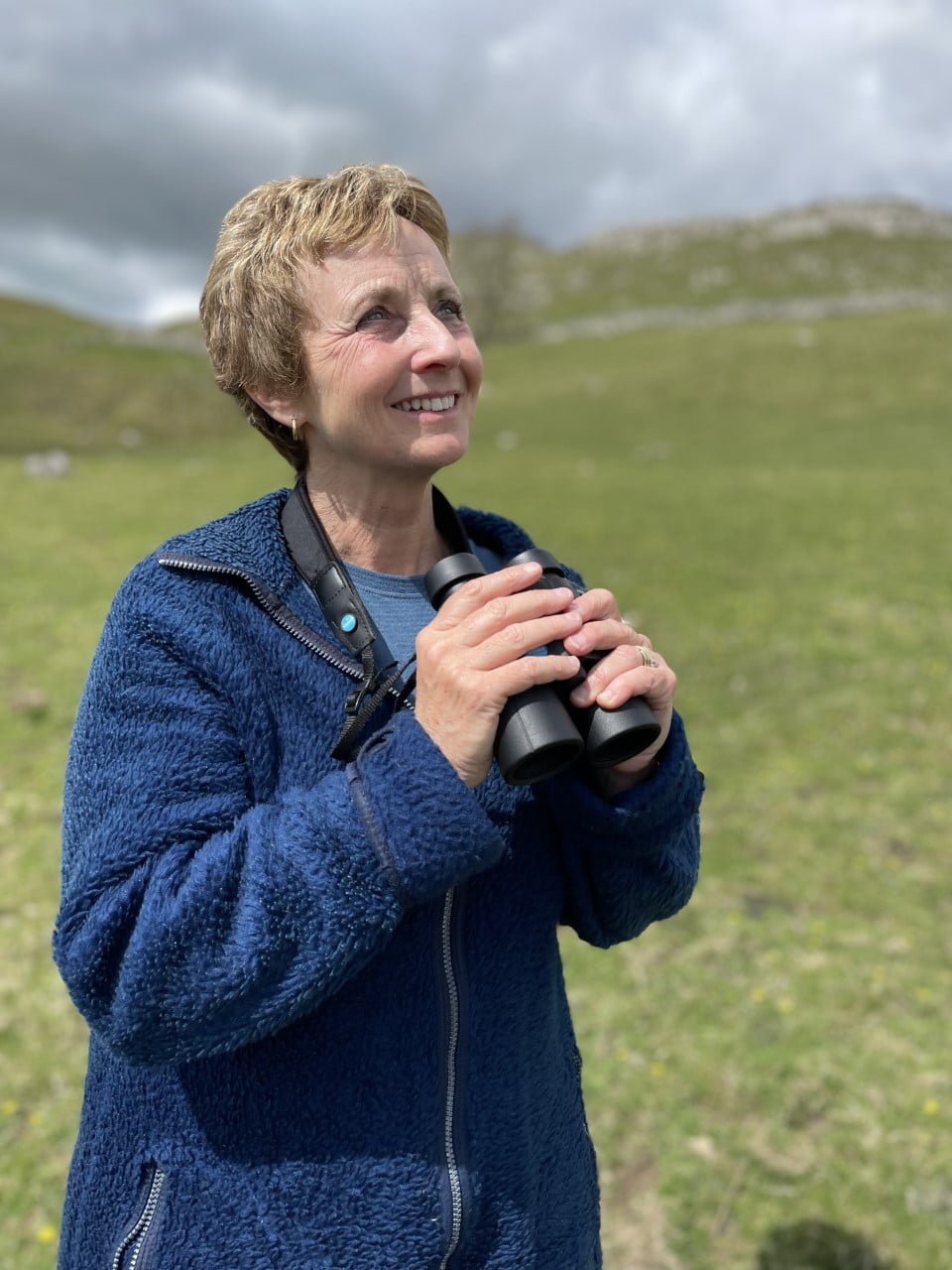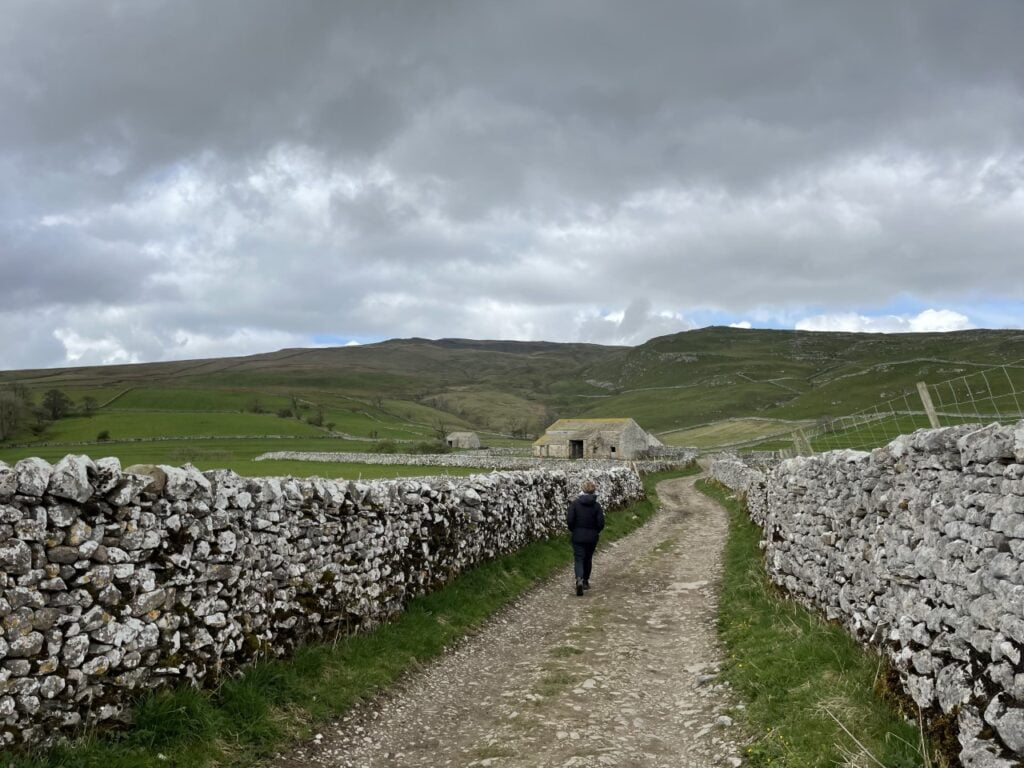By Mary Colwell. Anthropomorphism isn’t such a sin; it is a reflection of a deep desire to connect with wildlife and to better understand the world of non-human life. We all do it, I bet even the most rigorous scientist will see a reflection of themselves in the wild world around them. I do. Spend any time watching Curlews on their breeding grounds and you can’t help but be moved by their lives and how similar they seem to be to us. They form partnerships, defend their own and fight with difficult neighbours; they work hard to raise and protect their families and appear to show a range of behaviours that, on the surface, are similar to our own.
I had the privilege of filming them in the Yorkshire Dales recently with renowned wildlife cameraman, John Aitchison. We watched them flying over limestone crags and becks, their calls rolling across the famous green hills. We hid behind a stone wall and spent hours filming a pair that had settled into a meadow. The sun shone, the air was filled with singing birds, and for a while the world seemed right.


What struck me was just how busy they are. Curlews have complex pre-breeding rituals involving running, chasing, displaying on the ground and in the air and they are vigorous in defence of their territory. The male creates a number of scrapes for the female to inspect by squatting down in the grass and swirling around. He then calls and coxes her to have a look at his hard work, staying by her side to see the reaction. At one scape the male stayed still with his bill in the middle of the scrape while the female stood by his side, almost touching. She then put back her head and let out a long, soulful call which was utterly beautiful it pulled at every heart string. At other times, the female follows the male around, occasionally running at him with her head low. On one occasion she took hold of his leg and wouldn’t let go! They both fly and sing, swooping on currents of air and then flutter back to earth on stiff wings. We watched them fend off a challenging neighbour who seemed to taunt them from just over the wall. When a Raven flew over, they launched themselves into the air calling loudly. After a while, peace descended and simply pottered around feeding and resting. All that was a few days ago, I reckon now they will be on eggs.
Curlews share incubation for thirty-five days, swapping duties and keeping in touch with a range of calls. Their long bill tenderly moves the eggs around and they often stand up to inspect the nest. Much of the intimate nest behaviour comes from the wonderful ‘Curlew Cam’ set up each year by the Shropshire based curlew project, Curlew Country. Danger is everywhere, and Curlews work as a pair to spot threats from the ground and the air. If all goes well and they do hatch chicks, they will assiduously and tirelessly guard them for weeks with what seems to be tenderness and courage.
How horrible, then, to know that this field was mown early in the summer every year for silage. The nest or chicks didn’t survive the blades. Each and every year all their efforts came to zero.
The land has now been purchased by someone else who wants to manage it for nature and negotiations are underway. For the first time the mower will stay away from this field and the birds will have a chance. Worryingly, though, a pair of crows have a nest right by the field and the whole time we were there they flew around or sat on the walls, watching. They will know when the eggs appear and I wonder how long they will last. The mower won’t get them this year, but local predators might.
Spending time with nature is both life enhancing and grounding. It is a potpourri of sweet and bitter experiences. The complexities of the problems Curlews face become transparent very quickly, and their future seems to hang by a thread spun by us. Our landscapes are not natural, they are all shaped by our activities to some degree, and the birds simply try to survive in the hostile land we have created. I hope this pair does manage to raise a family, the first for many, many years. If they do, it will be against the odds. Like any good drama, we enter into the story by empathising with the characters, but in this case, I am not sure if the ending will be good or yet another year of dashed hopes. I will let you know.

